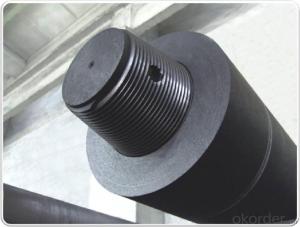Electrical Discharge Machining, or EDM for short, is a fascinating process that has revolutionized the manufacturing world. It’s like a superpower for creating intricate shapes and designs in metals that would be impossible to achieve with traditional machining methods. And at the heart of this incredible process lies the humble graphite electrode.
You see, EDM is like a sculptor’s chisel, but instead of chiseling away at a block of marble, it uses a series of electrical discharges to erode metal. It’s a precise and controlled method, and the graphite electrode plays a crucial role in shaping the metal to perfection.
Now, you might be wondering why graphite is the go-to material for electrodes in EDM. Well, graphite has some pretty impressive properties that make it perfect for this job. It’s got a high melting point, which means it can handle the intense heat generated during the EDM process. It’s also an excellent conductor of electricity, ensuring that the electrical discharges are directed accurately and efficiently.
But perhaps the most remarkable thing about graphite electrodes is their ability to be machined into complex shapes. This is because graphite is relatively soft and easy to work with, allowing for the creation of intricate designs that can be used to mold the metal in the desired shape. And once the electrode is shaped, it’s ready to be used in the EDM process.
The EDM process itself is quite simple in theory. A gap is maintained between the graphite electrode and the metal workpiece, and a dielectric fluid, usually deionized water, is used to insulate and cool the area. When a high voltage is applied, it ionizes the fluid, creating a spark that jumps the gap between the electrode and the workpiece. This spark is what erodes the metal, gradually removing material and forming the desired shape.
One of the key advantages of EDM is its ability to machine hard and conductive materials that are traditionally difficult to work with. Traditional machining methods like drilling or milling can be challenging when it comes to materials like hardened steel or superalloys. But with EDM, these materials are no match for the power of the electrical discharges.
Another benefit of EDM is its precision. The process can achieve tolerances of up to 0.0001 inches, which is incredibly accurate. This level of precision is essential in industries like aerospace, where components need to fit together perfectly and function without fail.
But EDM isn’t without its challenges. One of the main issues is the wear of the graphite electrode. Over time, the electrode will erode and need to be replaced or repaired. This can be a time-consuming and costly process, but advancements in electrode material and design are helping to mitigate this issue.
Moreover, the EDM process can be slow, especially when dealing with large workpieces or intricate designs. This is because the process relies on the gradual removal of material, which can take time. However, the end result is often worth the wait, as the final product is of exceptional quality.
In recent years, there has been a surge in the use of EDM in various industries, from automotive and aerospace to medical and jewelry. The versatility of the process and the ability to create complex shapes with high precision make it an invaluable tool for manufacturers.
So, the next time you see a beautifully crafted metal part, remember that it might just be the result of the magic of EDM and the humble graphite electrode. These two components work together to create masterpieces that push the boundaries of what’s possible in the world of manufacturing.

